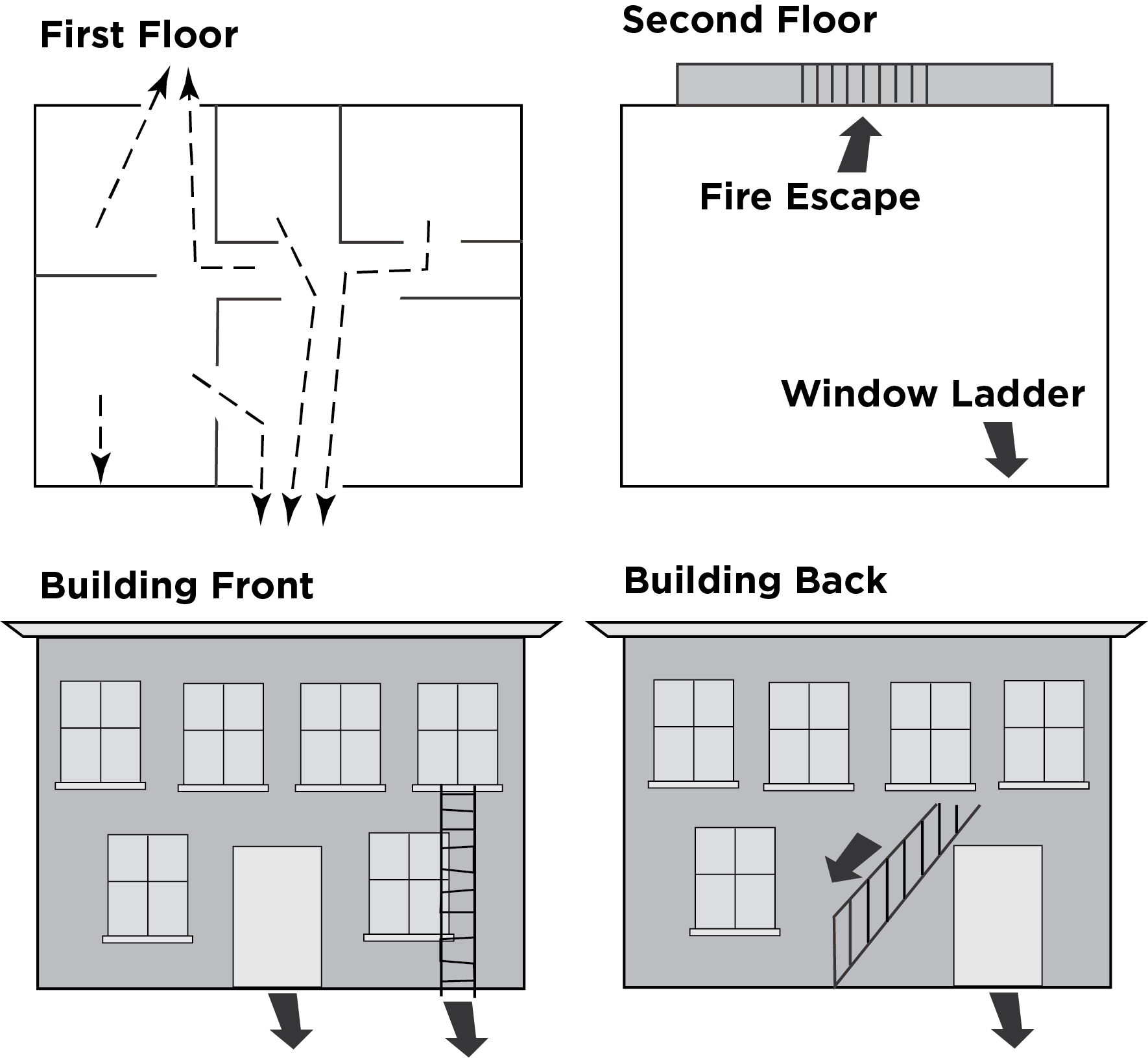Evacuation Plan
The National Fire Protection Association recommends that you establish an emergency evacuation plan to safeguard lives in the event of a fire or other emergency.
Draw a Floor Plan
On a clean sheet of paper, draw the walls, windows, doors, and stairs of your home or business. Draw any obstacles, such as large furniture and appliances, that a person may encounter while existing the building.
Develop Escape Routes
Determine at least two routes the occupants in each room can take to safely escape. Routes can include doors and easily opened windows. If the window is high off the ground, an escape ladder should be provided. Draw arrows on the floor pan to show escape routes from each room.
Decide Where to Meet
Prearrange a meeting place outside and away from where emergency personnel are likely to be working. Good locations include a neighbor's house or across the street. Always perform a head count to ensure all occupants safely exited.
Caution: Never enter a burning building. If the head count shows one of more people are missing, tell authorities immediately. Never enter a building to look for someone.
Practice Escape Plans
For an escape plan to be effective, everyone should practice escape routes from each room.

Escape Plan Example
Get Out Early
The best way to survive a fire or other emergency is to get out early. A fire alarm system installation with smoke and carbon monoxide detectors in each room can greatly decrease your risk of loss or injury.
